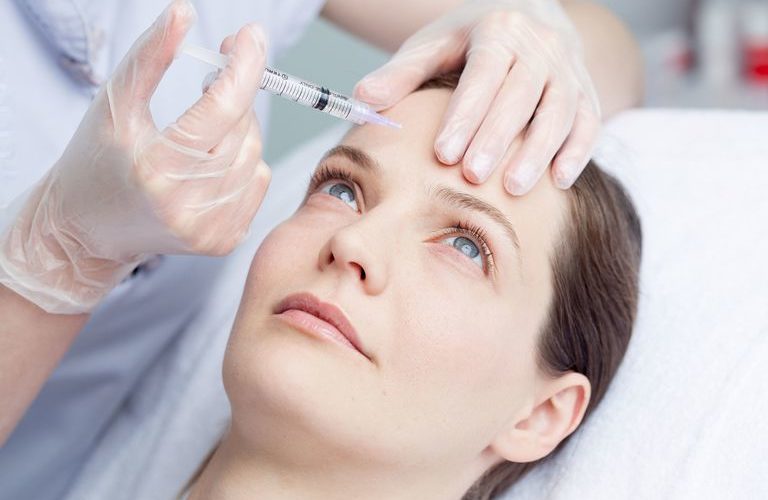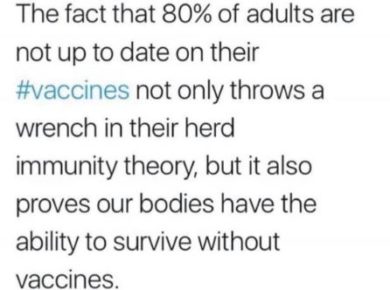In the past 5 years, the popularity of Botox in the U.S. has skyrocketed, with a 40.6 percent increase in procedures according to the latest figures from the American Society for Aesthetic Plastic Surgery (ASAPS), and a 5.1 percent rise since 2017. Last year, over 1.5 million Botox injections were carried out.
That is a lot!
But nobody seems to question this practice. It is believed to be safe. But is it the case?
Botulinum toxin is a neurotoxic protein produced by the bacterium Clostridium botulinum and related species. It prevents the release of the neurotransmitter acetylcholine from axon endings at the neuromuscular junction and thus causes flaccid paralysis. Infection with the bacterium causes the disease botulism and is lethal.
Botulinum toxin is used to reduce fine lines and wrinkles by paralyzing the underlying muscles. People also use Botox to treat excessive sweating, migraines, muscular disorders, and some bladder and bowel disorders.
Knowing that botox comes from a toxin, there are some concerns related to its use.
Two studies investigated the concerns related to botox injections.
“Altered cortical activation from the hand after botulinum toxin treatment.” Ann Clin Translational Neurol 2014, 1:64-68 by Arko Ghosh and colleagues
and
“Weise, D., Weise, C., & Naumann, M. (2019). Central Effects of Botulinum Neurotoxin—Evidence from Human Studies. Toxins, 11(1), 21.”
The conclusion:
Botox injections in the forehead and face rearrange the brain’s sensory map of the hands.
What’s concerning is that clients typically come back for regular injections, because the limited paralysis the toxin induces lasts only two to three months. The ongoing question is whether repeated treatments over a period of years result in permanent changes to one’s brain.
For a long time, we have known that the brain is plastic, meaning that its circuits and microscopic anatomy are malleable. They physically change in response to a number of external inputs.
For example, in violinists, the brain map devoted to the non-bowing fingers is much larger than the same finger region in non-violinists. In newly blind individuals learning braille, the cortical area devoted to the “reading finger” greatly expands into the newly unused visual cortex.
The brain maps of hand and face territories lie next to one another in the sensory cortex. After hand amputations, tactile inputs from the face routinely widen and shift into the territory newly deprived of sensory input from the hand.
Likewise, patients with facial paralysis due to Bell’s palsy or stroke have enhanced metabolic activity in the hand region of the sensory cortex. The principle is well established that the cortical representation of one body part widens in response to injury affecting another body part.
Based on this knowledge one would expect hand maps to increase after a patient’s face is paralyzed by Botox injections. And yet exactly the opposite happens.
This suggests that the cortical reorganization to Botox facial paralysis is intrinsically different from that observed after functional loss from amputations, facial nerve injury, or stroke.
We must account for this within the established knowledge that during intentional imitation of facial expressions, facial feedback alters neural activity within central circuits underlying emotion.
The current explanation for this counterintuitive observation is that the limited paralysis caused by Botox deprives the brain of sensory inputs normally generated by forehead and facial movement.
Even more unexpected is that both hands suffer a loss of cortical brain activity following a relatively small loss of facial movements. The changes in brain remapping are dose-dependent: the more you use, the bigger the effect.
Initial studies did not investigate whether cortical remapping was limited only to the hands, or whether other body parts were also affected.
Later studies showed more widespread effects and unintended consequences within the nervous system. It is an uncertainty that all who elect this “cosmetic” procedure should ponder.
In other words, botox injections seem to change the brain function and this is not a good thing!
Instead, I have been using a natural anti-wrinkle cream made of Eryngium Maritimum plant stem cells with great success.
In addition, wheat and sugar are known to reduce the elasticity of the skin and increase wrinkles. Obviously, eliminating these 2 foods helps.
Collagen is also great to improve the skin tone and prevent wrinkles.
The consumption of good fats is also important for skin health like avocados, fish, seafood, nuts, coconut oil, olive oil, and eggs.
And believe it or not, the old fashion grandmother’s secret, lard is coming back on the market. Everyone I talked to who tried it loved it!
The saturated fats that give cell membranes the “necessary stiffness and integrity” necessary for proper function. The saturated fat ratio is 50-55% saturated fat, making it uniquely compatible with our skin. It also contains Omega 3 fatty acids, which support cell membrane structure and therefore help skin hold in moisture.
God bless y’all 😊
Dr. Serge
#thenutritionscientist







